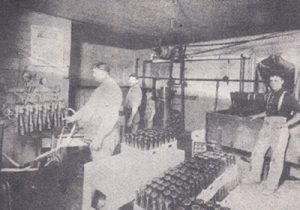Discover the Rich Tapestry of Our Hometown’s Heritage
Local History
Welcome to the Local History section of the Hortonville Public Library’s website, where the past comes to life and our community’s story unfolds. As stewards of the memories and narratives that have shaped our town, we are honored to present this digital repository of our local history.
Here, you’ll embark on a journey through time, exploring the lives of remarkable individuals, the evolution of our beloved landmarks, and the enduring spirit of Hortonville itself. Our history is not just a collection of dates and events; it’s a mosaic of the people, places, and stories that have woven together to create the vibrant community we cherish today.
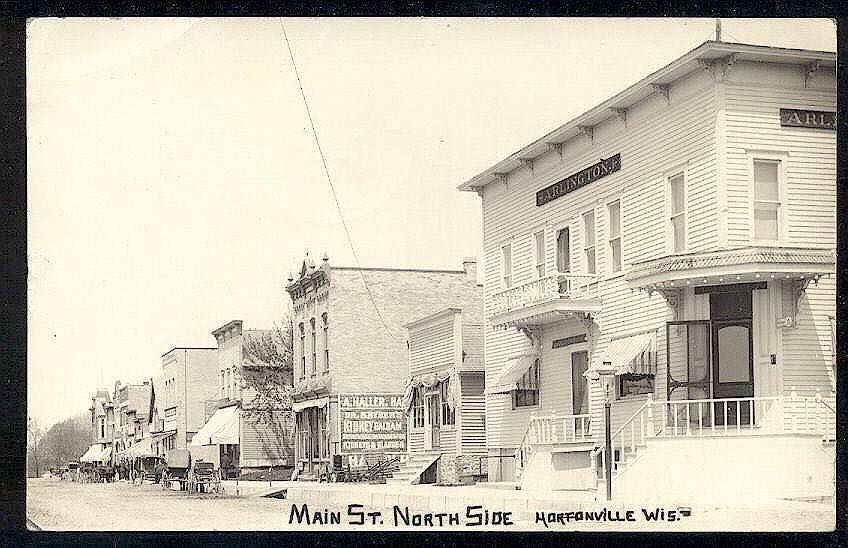
Taken from New London Buyers’ Guide/Hortonville Centennial, August 16, 1994. Posted with permission from the Press-Star, New London/Hortonville, Wisconsin.)
By Denise Morack
The village of Hortonville dates its origin from the earliest settlement of the Township of Hortonia.
Both were named for the same man, Alonzo E. Horton. Not all the facts concerning Horton’s early life are known, but what is known establishes him as one of the bold and adventurous breed that developed the West in the Mid 1880’s.
Had he been ruthless and grasping he might have gained more fame and certainly more wealth. Ruthless and grasping he was not. He died a poor man, but with the love and respect of his fellow citizens. And with that he was content.
“The Village of Hortonville was founded by Alonzo E. Horton in 1848 when he purchased land from the Governor of Wisconsin, which is now the Township of Hortonia and the Village of Hortonville. The land cost him seventy cents an acre! Later, in 1855, he traveled to California and there founded the City of San Diego. In his old age, Mr. Horton returned to Hortonville for a visit and was surprised to see how the Village had prospered. Alonzo Horton was born in 1813 and died at the age of 96 years.” (Village Directory and Commemorative History June 1976)
“Always an opportunist, Alonzo Eratus Horton saw the challenge of gaining riches in land speculation. He was born in Connecticut in 1813 and came to Milwaukee in May, 1836, later purchasing a home in Jefferson County about 1840 or 1841. His first wife, Sally Wright, whom he married in 1841, died five years later. He did not marry again until 1861, by which time he had left the area.
(Taken from New London Buyers’ Guide/Hortonville Centennial, August 16, 1994. Posted with permission from the Press-Star, New London/Hortonville, Wisconsin.)
Catholic families in Hortonville were visited by Oshkosh or Appleton priests and mass was held in private homes until 1861.
That year, a frame church was built on the corner of Nash and Cedar Streets.
Hortonville was attached to Greenville as a mission from 1870 to 1878.
From 1878 to 1897 a New London priest celebrated mass in Hortonville every other Sunday.
The present brick – Sts. Peter and Paul Catholic Church – was built by the Rev. P. L. Gasper in 1892. Five years later, Rev. Joseph Hemmer was the first resident pastor.
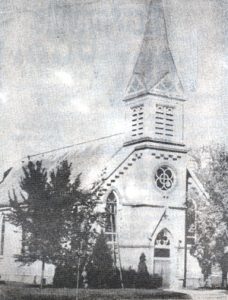
(Taken from New London Buyers’ Guide/Hortonville Centennial, August 16, 1994. Posted with permission from the Press-Star, New London/Hortonville, Wisconsin.)
Proceeds from the summer Hortonville Homecoming each year support community projects sponsored by the Commercial club.
The first homecoming were held on Main St. after the club organized in 1929.
Ten years later club members purchased park land known as the “Fair Ground” from the Outagamie County Agriculture Society. The first Homecoming on park land paid off the $1,600 mortgage.
(Taken from New London Buyers’ Guide/Hortonville Centennial, August 16, 1994. Posted with permission from the Press-Star, New London/Hortonville, Wisconsin.)
The earliest history of the Community Baptist Church can be traced back, practically, to the time of the first settlements in the village. Matthew McComb one of the founders of the Church, bought the first lumber sawed at the saw mill built in 1849 of what is now Mill and Bath Streets, and made a roof for his cabin in the woods.
During the early years of establishing their homes in the wilderness, the settlers did not neglect things of spiritual and religious. References indicate that they gave the building of the church early consideration. They met in the homes and in a school house until a church building was available.
(Taken from New London Buyers’ Guide/Hortonville Centennial, August 16, 1994. Posted with permission from the Press-Star, New London/Hortonville, Wisconsin.)
By Leona Mech
In 1852, William W. Briggs, a lumberman, came from Maine, and went into the lumbering business when he arrived in Hortonville. It took $50 to start house-keeping and his remaining $100 went into his business, when along with David Briggs and H. B. Sanborn, they secured the unsold portion of the village plat, and the saw mills.
Briggs, with Ira Hersey and Sanborn, built the first grist mill at Hortonville, thus adding to the comfort of settlers.
(Taken from New London Buyers’ Guide/Hortonville Centennial, August 16, 1994. Posted with permission from the Press-Star, New London/Hortonville, Wisconsin.)
The Hortonville community Hall, 312 W. Main St., was entered on the “national Register of Historical Places” by the United States Secretary of the Interior on January 23, 1981.
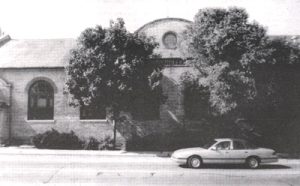
(Taken from New London Buyers’ Guide/Hortonville Centennial, August 16, 1994. Posted with permission from the Press-Star, New London/Hortonville, Wisconsin.)
According to the writings of Matthew McComb, the first marriage was contracted between Jahn A. Hewitt and Susan A. Sheldon, who came from north of Wolf River, then a part of Hortonia. The ceremony was performed by John Easton, justice of the peace, at Matthew McComb’s cabin in the month of April, 1850.
The river was swollen by spring floods, and the bride and groom built a raft of driftwood, got on board and crossed the river. They became entangled in the trees and bushes on the south side of the river.
Finding they could go no further with their unwieldy craft, yet not willing to return unmarried, they joined hands and plunged in and waded forty rods or more through two and a half feet of water to the shore.
After the ceremony the groom, taking his wife by the hand, said, “Lets go home,” and they returned in the manner they came. The narrator continues, “Many waters could not quench their love, neither did the floods drown it.”
“One of the first match factories of the world was started in Hortonville. It was located on the corner of Lincoln and Nye Streets. The one story building had high windows and was unpainted because there was no paint available.
A gas plant, which was located on Mill Street just on the north side of Black Otter Creek, furnished the power to light the lamps that were on poles on the streets. These were replaced by electric lights in 1918.
(Taken from New London Buyers’ Guide/Hortonville Centennial, August 16, 1994. Posted with permission from the Press-Star, New London/Hortonville, Wisconsin.)
Hortonville has had a regular Lutheran preaching station since 1867.
But members of the Bethlehem Evangelical Lutheran Church date their anniversaries from August 14, 1870 – the dedication of their first church building.
In January of 1897 the congregation voted to build a new church on the corner of Nash and Embarrass Sts. Five days later the first stones were hauled for the basement of the church.
(Taken from New London Buyers’ Guide/Hortonville Centennial, August 16, 1994. Posted with permission from the Press-Star, New London/Hortonville, Wisconsin.)
Perhaps Hortonville’s most famous citizen was Gerald Nye.
He was a former editor of the Hortonville Review who became a leading opponent of America’s entry into World War II as a Republican senator from North Dakota.
Nye was born in 1892 in Hortonville but his family moved to Wittenberg when he was two.
He became editor of the Hortonville Weekly Review when he was 19 and stayed until 1913.
(Taken from New London Buyers’ Guide/Hortonville Centennial, August 16, 1994. Posted with permission from the Press-Star, New London/Hortonville, Wisconsin.)
By Leona Mech
The city of Hortonville dates its origin from the earliest settlement of the Township of Hortonville.
Both were named for the same man, Connecticut born Alonzo E. Horton, who was also the first settler.
In the winter of 1847-8 settlers in the prairie or sparsely timbered counties to the south and southwest needed shingles. Knapp Brothers made hand-shaved shingles in a cabin on the site of Hortonville. At this place they were merely squatters, and it is doubtful if they were actually settlers in Outagamie County.
(Taken from New London Buyers’ Guide/Hortonville Centennial, August 16, 1994. Posted with permission from the Press-Star, New London/Hortonville, Wisconsin.)
Since 1873, Hortonville has had a volunteer fire department, but for its first half century, people weren’t the only volunteers.
The fire engine was horse drawn, but the village did not keep a team of horses for that specific purpose. So when the fire bell was rung to call the volunteers, any team of horses on Main St. was liable to find itself hitched to the engine and whisked away to a fire.
(Taken from New London Buyers’ Guide/Hortonville Centennial, August 16, 1994. Posted with permission from the Press-Star, New London/Hortonville, Wisconsin.)
Although not much remains of the Yogerst Brewery in Hortonville, Sebastian Yogerst once supplied area saloons with Hortonville’s own brew.
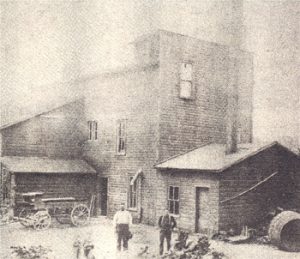
Sebastian Yogerst’s brewery in Hortonville
The brewery was located on the sight of Lon Kringel’s barber shop. Brothers Joe and Paul Borsche, pictured in front of the brewery, and Joe’s young son Martin lent a hand when needed.
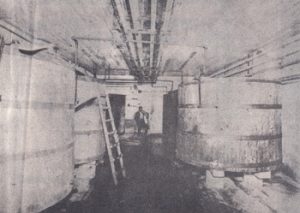
Yogerst’s brew aged in huge wooden vats
